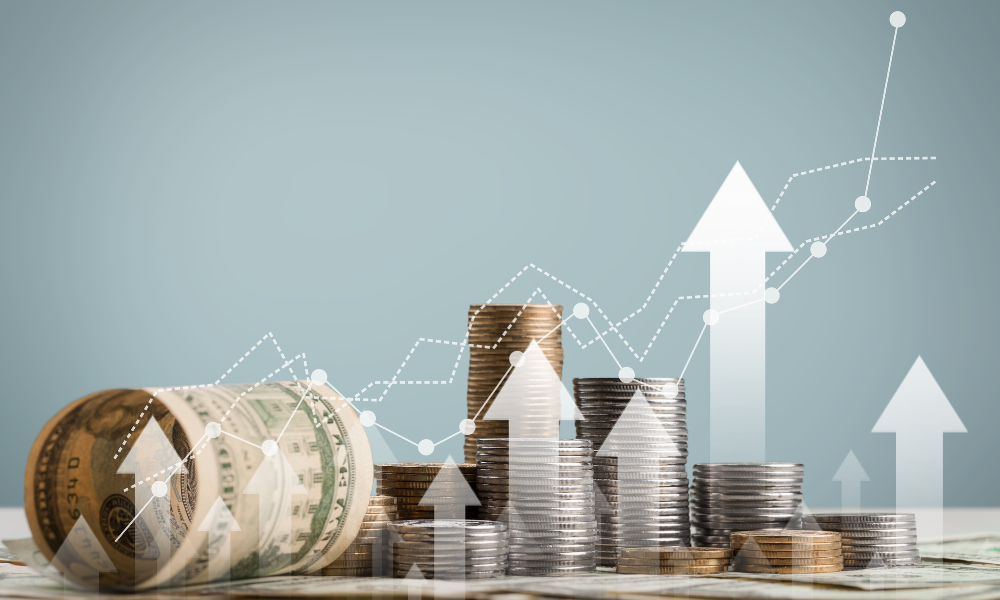Canadian equities lead from Beutel Goodman breaks down firm's total-return approach

This article was produced in partnership with Canada Life.
Ask the average investor what the difference is between “return on equity” and “return of equity,” and they’ll probably only point to the change in preposition. But to Stephen Arpin, the distinction goes deeper than that.
“Return on equity is calculated as net income divided by equity, and it’s usually expressed as a percentage,” says the Managing Director, Canadian Equities at Beutel Goodman, which subadvises an array of American, Canadian, and global equity funds for Canada Life. “It's a measure of how high-returning or profitable a company’s existing business is.”
A company that’s able to generate a high return on equity can potentially give back value to its shareholders through a return of equity strategy. That could be in the form of share buybacks, which shrink the number of available shares in the market and increase the value of the remaining shares, or dividend payouts.
“Depending on its competitive position, a company may require a different strategy. For a cyclical business, we would be more cautious about how much equity it could actually return to shareholders,” Arpin says. “Businesses that are more stable – like a utility or a pipeline – usually have guaranteed returns, so then they can think about what kinds of dividends they can pay out, or how aggressively they might pursue share buybacks.”
Because everyone loves a goose that lays golden eggs, dividend-paying companies and companies that engage in buybacks have a hallowed place in investors’ portfolios. But as seasoned stock-pickers with a focus on total return, Arpin and his colleagues at Beutel Goodman know better than to be enticed by a return-of-equity strategy alone.
“All our decisions are made from the bottom up,” Arpin explains. “We run concentrated portfolios, and we look at individual businesses, evaluating each based on their intrinsic value.”
A record of buy-sell discipline
To gauge a company’s intrinsic value, Arpin and his team examine several key indicators. Aside from free cash flow, which they generally regard as the most vital factor, they home in on discounted cash flow valuations as well as a company’s asset values. Beyond that, they set their sights on businesses that have healthy, sustainable prospects of generating free cash flow.
“We're looking for businesses that have some kind of competitive advantage. That could be a structural advantage in the industry, a low-cost position, or maybe a patent,” Arpin says. “That's going to reinforce the stability of their free cash flow, and also may drive its potential growth over time.”
While owning a high-quality franchise is table stakes for the managers at Beutel Goodman, they also take great pains to avoid overpaying for a business. Two decades after the 2000 dot-com bubble, countless investors once again rushed into the world of frenzied speculation. Enabled by a flood of cheap money into the financial markets, many were exposed to substantial capital losses after paying extreme multiples for businesses they perceived to have long runways of growth.
Beutel Goodman’s portfolio managers take that kind of emotion out of their investing by adhering to a very disciplined buy-sell process. First, they scrutinize market multiples, as well as any available information on precedent transactions, and buy companies that are trading at a discount to their estimated intrinsic value. Second, once a portfolio holding reaches their target price, they will sell a third of that position, then reassess from there whether they want to hold it for longer or redeem more.
“In building our portfolio, we’re looking for companies that have a return potential of 50% total return, inclusive of dividends, over three years,” Arpin says. “By focusing on businesses that are sustainable free cash flow generators, we’re able to build a high-quality portfolio that, over time, should provide risk mitigation and capital protection.”
Finding strength in sustainability
For companies with strong free cash flow, a return-of-equity strategy isn’t always the best play. Depending on where they are in their life cycle, they may be better off reinvesting the cash into their business, or seizing attractive opportunities to make acquisitions. Stock buybacks could also open the door to diluting future returns, especially if a company is already highly profitable with a relatively expensive share price.
When evaluating dividends, sustainability is a critical factor. Companies that offer excessive payouts may impair their ability to maintain and reinvest in the business, hurting their competitive position. With that in mind, the team at Beutel Goodman keep a watchful eye on capital allocations, looking for companies that take a prudent and disciplined approach to investing in the business while managing returns to shareholders.
“We think it's important for companies to be cautious, so we will monitor their payouts and capital allocation,” Arpin says. “Aggressive buybacks wouldn't necessarily prevent us from buying a business that we think is attractively priced versus its intrinsic value, but it's something that really needs to be thoughtful.”
In today’s challenging economic climate, Beutel Goodman’s emphasis on sustainable dividends truly shines. A global economic slowdown, higher inflation, and rising debt costs are coming together to drag down companies’ operating margins, limiting their potential to achieve profitability. Under these conditions, it takes genuinely resilient businesses to reliably return capital to their shareholders.
“Sustainable dividends were a big point of focus 10 years ago, and usually they become top of mind when people are chastened by what happens in the market,” Arpin says. “In the long run, they can account for as much as half of shareholders’ total returns.”
In a recessionary scenario, he says share buybacks are usually the first to go on the chopping block. While companies generally tend to not touch their dividends, those could also be reduced in a severe-enough recession. But over time, companies with strong competitive positions can be expected to adjust their operating margins, pricing, and costs to regain profitability. That means for businesses with strong intrinsic values and bright long-term future outlooks, the current bearish squeeze on stock valuations sets the stage for healthy total returns and capital appreciation.
“We're seeing better return potential in the portfolio as valuations decline. And we believe there's an attractive risk-return potential in areas where investors are most worried about the recessionary impact,” Arpin says. “Obviously, if we have a recession, it's going to probably cause further stock price downside, but we are seeing some attractively valued franchises.”
The views expressed in this commentary are those of this investment manager as at the date of publication and are subject to change without notice. This commentary is presented only as a general source of information and is not intended as a solicitation to buy or sell specific investments, nor is it intended to provide tax or legal advice. Commissions, trailing commissions, management fees and expenses all may be associated with mutual fund investments. Please read the prospectus before investing. Mutual funds are not guaranteed, their values change frequently, and past performance may not be repeated. A description of the key features of the segregated fund policy is contained in the information folder. Any amount allocated to a segregated fund is invested at the risk of the policyowner and may increase or decrease in value.
Canada Life and design, and Canada Life Investment Management and design are trademarks of The Canada Life Assurance Company.



